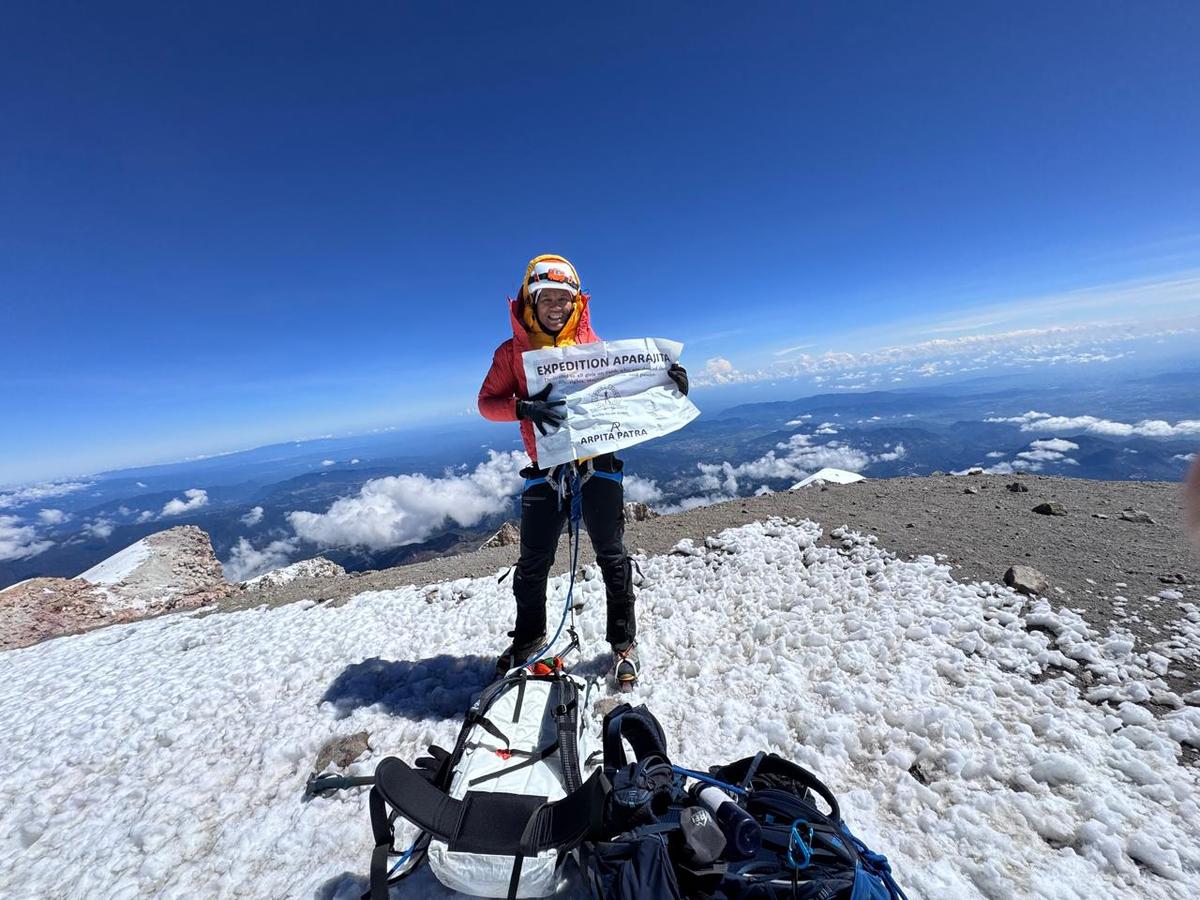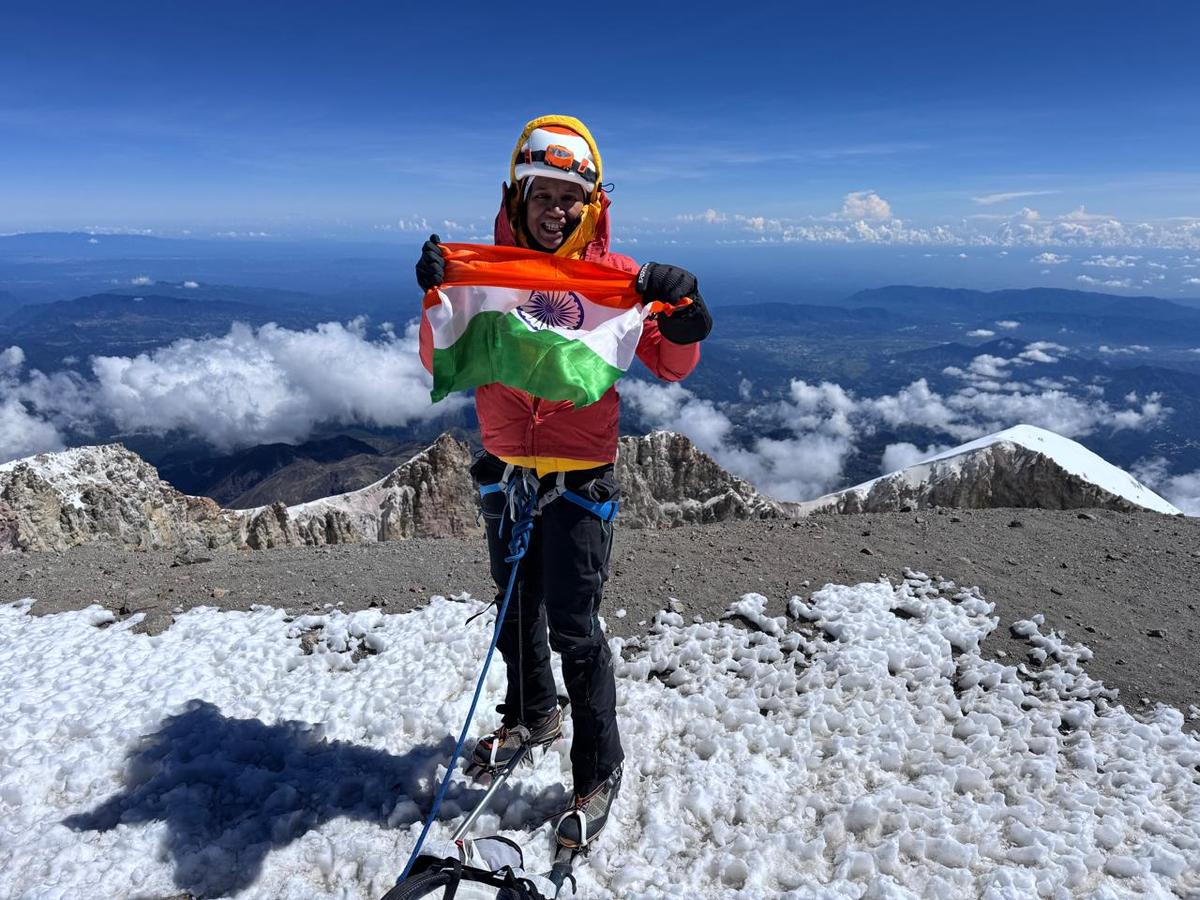In an extraordinary feat that blends scientific brilliance with mountaineering grit, IISc Bengaluru professor Arpita Patra has successfully summitted the highest volcanic peaks across four continents, a rare achievement that places her in the ranks of some of the world’s most versatile explorers. Known primarily for her contributions to secure cryptographic systems, Patra’s ascent into the mountaineering spotlight highlights a remarkable duality: the ability to excel both in theoretical frontiers and in the unforgiving extremes of nature. Her journey has sparked widespread admiration among academic and trekking communities alike, calling attention to how intellectual rigor can coexist with physical determination.
This achievement is also deeply personal. Patra has often spoken about mountaineering as a way to test endurance and confront mental barriers, a philosophy she carried into each ascent. Her accomplishment comes at a time when discussions of Indian representation in adventure sports are gaining momentum. Many see her summits as a symbol of perseverance for young scientists who aspire to balance scholarship with personal passions. Her journey is a reminder that exploration, whether of knowledge or mountains, is driven by a shared spirit of curiosity and courage. It also addresses enduring stereotypes by showing that an academic career need not limit physical adventure.
Patra’s achievement is particularly notable because volcanic peaks pose distinctive challenges beyond altitude. They often involve unpredictable weather, loose volcanic scree that hinders stability, and exposed terrains that demand extreme mental and physical preparation. Successfully reaching the summits across different continents required months of planning, acclimatization strategies, and precise execution of mountaineering techniques. Each climb brought new lessons, enabling her to grow not only as an adventurer but also as an individual grounded in resilience. As her story gained visibility, it showcased how academic institutions like IISc support holistic development beyond research labs.

Scaling the Elements: The Four Fierce Peaks
Patra’s journey across these four volcanic summits reveals unique narratives of terrain, challenge, and personal victory. Each mountain offered a distinct landscape and test of endurance. Her first major climb took her to Ojos del Salado in South America, the highest active volcano in the world. The ascent required acclimatization to extreme altitudes that could impair breathing, vision, and stamina. With temperatures plunging well below freezing and strong winds challenging stability, the climb demanded technical skill as well as efficient oxygen management. Patra’s successful summit was a foundational milestone that strengthened her confidence for subsequent expeditions.
Her next expedition, to the summits of Mount Kilimanjaro in Africa, blended volcanic terrain with vast ecological diversity. Kilimanjaro’s landscape transitions from lush forests to alpine deserts before culminating in icy stretches near the peak. For Patra, the transition mirrored the psychological journey of an explorer—one that oscillates between familiarity and uncertainty. The climb also offered opportunities to interact with local communities, deepening her appreciation for the cultures surrounding these natural wonders. Kilimanjaro is renowned for its accessibility, yet its summit push remains strenuous. Her success demonstrated a capacity to adapt to both environmental shifts and logistical complexities.
Asia brought Patra to Mount Damavand in Iran, a peak known not only for its elevation but also for its stunning volcanic sulfur vents. The mountain holds cultural significance in Persian mythology, making the expedition as emotionally enriching as it was physically demanding. Damavand’s terrain presents unique dangers: shifting snowfields, exposed ridges, and sulfur-laden air that can cause respiratory distress. Navigating these hazards required a steady pace, technical route choices, and strong decision-making—qualities Patra has honed through her scientific career. Summitting Damavand added a new dimension to her adventure narrative, one where myth and natural challenge converge.
Her fourth summit took her to Mount Giluwe in Papua New Guinea, a less-explored volcanic mountain offering breathtaking grasslands and rugged rock formations. Unlike the icy, barren environments of the other volcanoes, Giluwe’s approach route is lush and vibrant. Yet the peak itself requires endurance and careful navigation through dense fog and damp surfaces. Patra described the experience as deeply humbling, offering encounters with indigenous cultures and wildlife seldom seen in typical climbing itineraries. Giluwe proved that adventure lies not only in physical struggle but also in cultural immersion and experiential discovery, enriching Patra’s already expansive worldview.
The Science of Strength: Balancing Research and Adventure
As a professor at IISc, Patra is a pioneer in secure cryptography and advanced computation. Balancing the rigours of research, teaching, and mountaineering required disciplined time management and personal commitment. Her colleagues describe her as someone who approaches mountaineering with the same precision she applies to her academic work—detailed planning, an appetite for problem-solving, and readiness to adapt to changing conditions. This duality has inspired many within the IISc community, demonstrating that intellectual and physical pursuits need not be mutually exclusive. Her trajectory underscores how the spirit of inquiry transcends both the lab and the mountainside.

Beyond physical training, Patra devoted significant time to mastering high-altitude survival techniques, including emergency response protocols, guided navigation, and equipment specialization. She attributes her success to a combination of rational analysis and intuitive responses—skills honed through years of academic research. She acknowledges that both science and mountaineering require the willingness to embrace uncertainty while maintaining structured thinking. Each expedition strengthened her ability to make calculated decisions under pressure, an asset she brings back to her classroom and laboratory. These experiences enrich her professional teaching, offering students real-world examples of resilience and adaptive problem-solving.
Patra’s mountaineering also carries symbolic resonance for women in science. Her achievements challenge traditional notions of gendered expectations, showing that women can lead in both intellectual and physical landscapes. She notes that, while the number of Indian women engaging in high-altitude mountaineering is growing, representation remains limited. Through her summits, she hopes to encourage more women professionals to explore adventure sports without hesitation. She believes that stepping outside routine professional environments builds clarity, confidence, and emotional maturity. By doing so, she advocates for a more dynamic narrative about women in academia—one that celebrates diverse ambitions.
Her journey also sparks broader conversations about mental health and well-being among researchers. The long hours and intense demands of academia can lead to burnout, isolation, and self-doubt. Patra found that mountaineering helped counter these pressures by offering time for reflection, emotional reset, and reconnection with nature. Climbs often require climbers to face fear, pain, and vulnerability—feelings scientists are trained to suppress. By embracing these emotions, she says, one can build stronger resilience both inside and outside the workplace. Her experience aligns with growing calls for healthier academic environments that recognise the importance of personal exploration.
Importantly, her summits underscore the crucial role of supportive institutional culture. IISc’s recognition of Patra’s mountaineering pursuits reflects a shift in Indian academia toward acknowledging the value of holistic achievement. Fellow faculty members and students have expressed pride in her accomplishments, noting that her success showcases the human dimension of research professionals. They believe personal dreams can coexist with professional responsibilities, and that institutions should nurture multidimensional growth. Her recognition is expected to encourage other researchers to pursue passions beyond their core work, enriching the intellectual landscape of the institution.
Looking ahead, Patra intends to complete the Seven Volcanic Summits challenge, which requires climbing the highest volcanic peak on every continent. With four already summitted, she has three more to go—Mount Elbrus in Europe, Pico de Orizaba in North America, and Mount Sidley in Antarctica. These climbs will present new challenges, particularly Antarctica’s remote climate and logistical hurdles. However, she remains optimistic, approaching the upcoming journeys with meticulous planning and characteristic humility. Completing the challenge would cement her place among the world’s elite volcanic climbers, showcasing an extraordinary blend of scholarship and courage.
The broader impact of her story is measured not only in records but also in inspiration. Her narrative has resonated across classrooms, trek groups, and online communities that celebrate adventure. For young students, particularly girls, Patra’s story demonstrates that intellectual excellence can pair seamlessly with physically demanding passions. For adventurers, she exemplifies how to pursue challenge while balancing a demanding career. Her summits serve as markers of human potential—proof that determination can expand the boundaries of what is thought possible. It is this emotional force that has elevated her story beyond personal achievement and into the public imagination.
As her journey continues, Patra remains grounded in the values that propelled her forward: curiosity, discipline, and compassion. She views each mountain not as a conquest but as a teacher, offering lessons in humility and respect for nature. These perspectives shape her academic and advisory work, where she encourages students to approach learning with courage and open-mindedness. She believes that intellectual and physical exploration reflect the same driving question: “What lies beyond the boundary I know?” It is this shared pursuit that defines her life’s work, inspiring a generation to seek their own summits.
Conclusion
IISc professor Arpita Patra’s summits of the highest volcanic peaks across four continents mark an emotional, physical, and intellectual triumph. Her journey is a testament to the power of human will, the beauty of interdisciplinary passion, and the strength that lies in embracing life’s many terrains. Through harsh winds, ice, mythic landscapes, and foreign cultures, she navigated not just mountains but the depths of her own spirit. Her story demonstrates that greatness is not bound by profession or expectation—it arises wherever courage meets curiosity. As she prepares for the next three peaks, her life continues to stand as an anthem of resilience, inspiring countless dreamers to rise above and find their own volcanic horizons.
Follow: Karnataka Government
Also read: Home | Channel 6 Network – Latest News, Breaking Updates: Politics, Business, Tech & More

